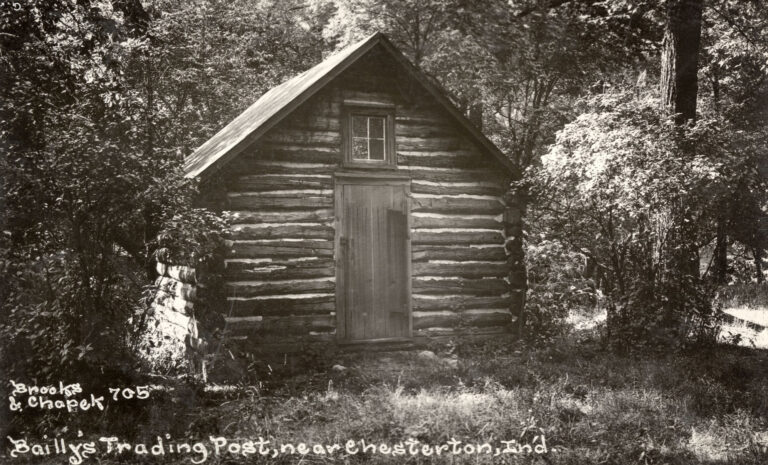The Trading Post and the Powell Family
European trade with the Native Americans played a very important part in shaping early America, and this was no more prevalent than in the Wisconsin territory. As early as 1654 French explorers came to Wisconsin through the Great Lakes in search of furs and were the first Europeans to be involved in the fur trade. Along with them they brought steel knives, tools, and other wares to trade in exchange for predominantly beaver pelts which were in high demand back in Europe. Many of these early traders married Native American women and their children grew up to be traders who could speak the Native American dialects.
The Powell family was one of these European families. Peter Powell was an English officer in the militia under the British in the war of 1812. After the war he set up a trading post on big Butte des Morts Lake. His son William spent his early childhood with the Menominee and knew Chief Grizzly Bear and Chief Oshkosh. He also went into the Native American trade and ran a post north of Omro on the Fox River. William was fluent in the Menominee language and was frequently used as an interpreter.
James Powell, whom the spring is named after, was William’s cousin and is said to have come from Green Bay in 1833. He built a trader’s cabin and blacksmith shop here under the direction of Pierre Paquette who was an agent for John Jacob Astor’s American Fur Company. Mr. Brown, in his March 1917 article in The Wisconsin Archeologist said the trading post included a 18’ by 25’ trader’s cabin with a smaller building used as a blacksmith shop. These structures were believed to be located just south of the creek.
Not much is known about James other than the fact that he had a Native American wife and had several acres under cultivation in the mid 1830’s. Although he wasn’t listed in the Michigan territory census of either 1830 or 1834, he was listed in both the 1837 and 1838 Wisconsin censuses. His cousin William claimed that in 1838 James had moved west of the Mississippi into Iowa where the Ho Chunk were being relocated by the American government and William subsequently lost track of him.
Pioneer Richard Dart’s recollection of James was that “he was drunken, ugly, and quarrelsome, and greatly disliked by the Indians who drove him off the post around 1838.”
An early resident, Henry Burling, heard a different version of James’s departure. As a young boy, Henry believed that James was mysteriously shot or burned in his shanty and was buried on his father’s farm near Twin Lakes. Over time the grave site was plowed under.
Whatever his demise, the trading post was believed to have burned down in the late 1830’s and trade was no longer conducted at the site.


